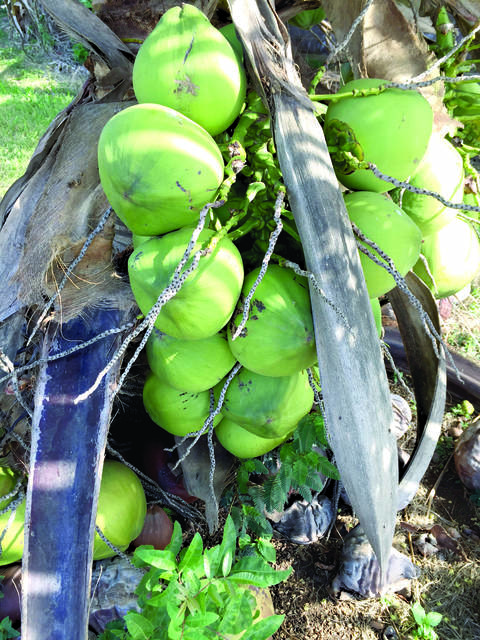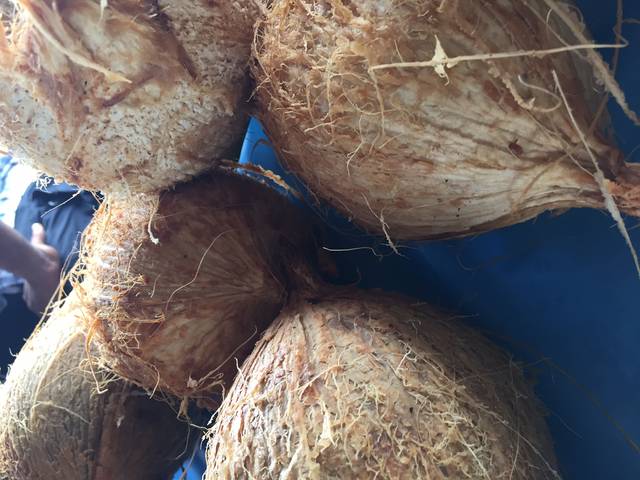Any day is a fine day for a drive wherever you live on our beautiful Island.
Rain or shine, your drive should include Panaewa Rainforest Zoo and Gardens.
This hidden gem in the emerald rain forests near Hilo is home to tigers, macaws and all kinds of wildlife. It also is known for the great collections of palms, bamboos, cycads and tropical rhododendrons. The Hawaii Chapter of the American Rhododendron Society is having its monthly meeting from 10 a.m.-2 p.m. next Sunday, Oct. 21, at the zoo and invites the public to learn about the beautiful varieties of Vireya and how to grow them.
According to Sherla Bertelmann, Hawaii Chapter president, free plants will be available as well. It is a potluck, so bring your favorite dish. Even if you live on the Kona side, it is a beautiful drive to view all the flowering trees, such as our native wiliwili, along the way.
The meeting also will give you an opportunity to meet knowledgeable horticulturists including enthusiastic members who enjoy sharing their plant growing experiences. Of course they will encourage you to become a member, and that is a good thing.
The society supports research, conservation and discovering new species around the world. It has meetings in exotic places. On these trips, much of the time is spent studying many other plant groups associated with rhododendrons in the cloud forests and rain forests of the world. Perhaps new species will be discovered and brought into cultivation.
Soon they could be showing up in local botanical gardens, nurseries and home landscapes. We already have species from tropical Asia, but many more are yet to be introduced.
While at the zoo, you might encounter members of the Hawaii Chapter of the International Palm Society tending the extensive palm collection. The palm society has meetings and plant sales at the zoo. The Hawaii Chapter meets on a regular basis. For upcoming meetings, tours and program dates, check out the society’s website at hawaiiislandpalmsociety.com. You also can call Rick Kelly, chapter vice president, at 756-8145 if you would rather talk to a human versus a computer.
When it comes to species of palms, there are thousands with more discovered each year. They come from the high mountains, such as the Andean wax palms that live at 11,000 feet above sea level, to equatorial rain forest species such as those from the Amazon. Desert palms are another large group, but none is quite so close to our Hawaii hearts as the coconut palm.
The coconut palm group is composed of scores of varieties including some dwarf types that should be used more in Hawaii. Not only are they shorter and easy to harvest, they are resistant to a devastating disease referred to as lethal yellowing. If you want the disease resistant dwarf Malay coconut plants, Jim Parker in North Kohala has them available. Call him at 889-6159.
Palms here have few serious diseases at present. Hawaii’s palms can be affected by bud rot or stem bleeding disease that are often caused by physical damage such as unsanitary pruning equipment or climbing spikes.
Most palms showing yellow or stunted growth in West Hawaii have been found to be suffering from lack of fertilizer or water. These problems are correctable, but if lethal yellowing ever gets to Hawaii, there’s no practical way of stopping the destruction of our island’s palms. Not only would the coconut palm be destroyed, but more than 100 species of native and exotic palms would also die.
This disease, originally throughout to be a disease exclusively of coconut palms, occurs in the West Indies, Florida, Texas, Mexico and Africa. A similar disease occurs in the Philippines. When any new species are introduced here, they go through rigorous inspection to make sure they are free of pests whether they are palms, rhododendrons, fruit trees or bamboos.
Hawaii is fortunate to be far from regions impacted by disease, but it is vital that we don’t introduce this and other plant plagues. It is important to cooperate with the Hawaii and federal agriculture departments and follow all the rules of inspection.









